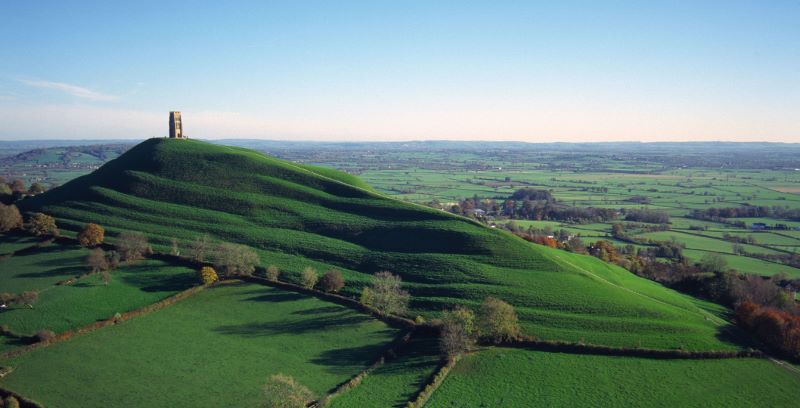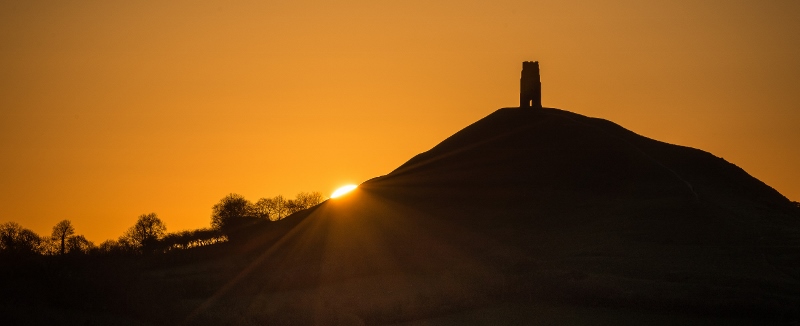Glastonbury Tor

ABYHE6
Glastonbury Tor, on the mystical “Isle of Avalon”, is a truly iconic feature of Somerset’s landscape. At 158 metres it rises high above the Avalon Marshes and can be seen from across the county and beyond. On its summit stands St Michael’s tower, which adds further to the dramatic effect of the Tor at sunrise, sunset and on misty mornings.
Geology
The Isle of Avalon, the Holy Thorn and Glastonbury are surrounded by myth and legend. Whilst geologists are not entirely sure why the Tor has survived the erosion of the land around it they do agree that it is a natural feature. The top of the Tor is formed from Bridport Sands and is underlain by clays and limestones deposited during the Jurassic period 208 to 146 million years ago.

Faults and Springs
The Tor lies on a fault line in the geology where a natural spring, the Chalice Well, brings minerals to the surface. The theory is that this spring hardened an area of rock which then resisted erosion. Over millions of years as the land around was eroded the Tor survived to give us the dramatic feature we see today.
Image – Lion’s Head Fountain Chalice Well, S Smiler, Wiki
The Terraces
The sides of the Tor have distinctive terraces. The straightforward explanation is that they are man-made strip lynchets (narrow field terraces) dating from the middle ages, which are common on steep, well-drained hillsides. However, there are other theories too. For example, could the terraces be some form of cultural focus created during the Neolithic period?
Walk to the top!
Whether you believe in the prosaic explanations or the more mystical ones we recommend that you walk to the top, marvel at the view, take in the atmosphere and then return to the town for a cup of tea or perhaps something stronger!
